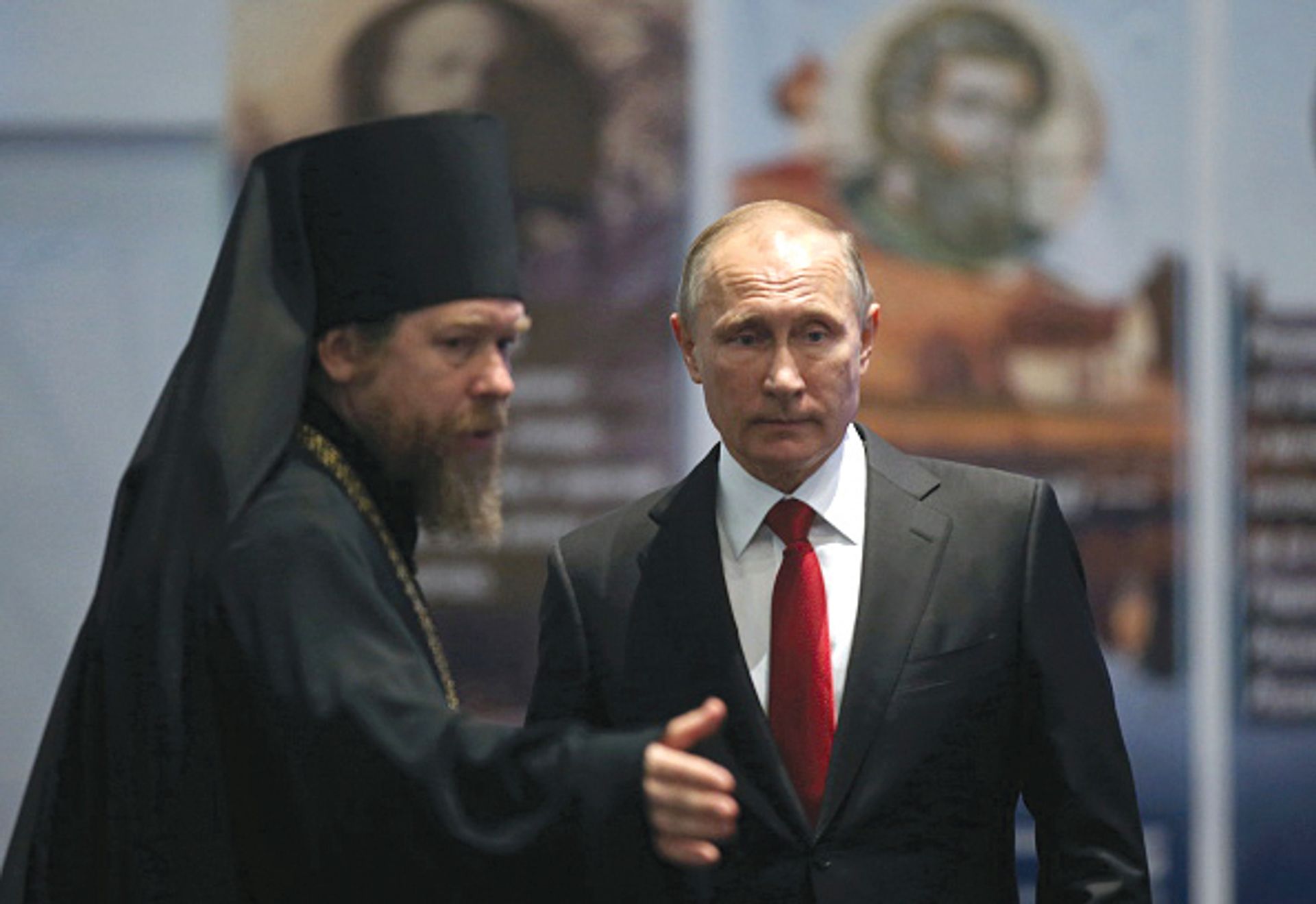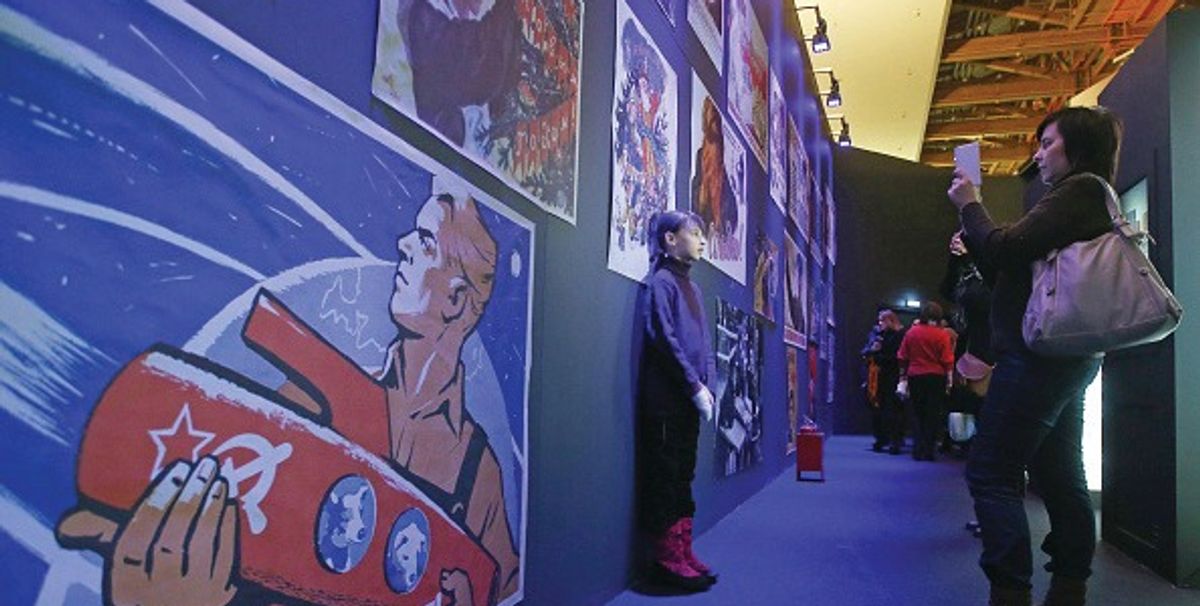Works by Wassily Kandinsky and other Russian and European masters have been left out in the cold—literally—as a foundation created by a Russian bishop with ties to Vladimir Putin works to establish up to 25 new displays dedicated to patriotism in cities across the country. The rush to launch the elaborate multimedia exhibitions is drawing fierce opposition.
The displays are inspired by an annually updated exhibition called Russia—My History, which was launched in 2013 by Tikhon Shevkunov, a Russian Orthodox bishop who is reportedly close to President Putin. Every November, Bishop Tikhon gives Putin a personal tour of the show in Moscow. The presentation is meant to encourage patriotism by offering positive interpretations of Russian and Soviet history. Ivan the Terrible’s bad reputation is presented as a product of Western fake news, for example, and Stalin is credited with restoring the Russian empire.
Bishop Tikhon’s Foundation for Humanitarian Projects will oversee the national expansion of the project. So far, the rollout has been rocky. In some regions, new pavilions are being built for the exhibition. But in the Siberian city of Tyumen, hundreds of works were transferred on short notice in sub-zero temperatures from the Tyumen Regional Museum of Fine Arts to make room for the new display, according to the local art historian Elena Kozlova-Afanasyeva.
Among the newly homeless paintings is Wassily Kandinsky’s Composition (1916), which recently returned from a years-long European tour. Other Western European art, Russian paintings and icons are also in limbo. Local opposition media published footage of the works being carried out of the building in boxes and placed on snowy ground.
“A sharp drop in temperature is one of the most frightening things that can happen [to works of art],” says Kozlova-Afanasyeva, who worked at the Tyumen Museum in the 1980s and 90s and is leading a public campaign to save the collection. She says the museum’s unfinished new facility at the Slovtsov Museum Complex, the umbrella organisation to which it belongs, is far from an ideal environment for the works.

The Slovtsov complex’s new director, Svetlana Sidorova, supports the move, but many museum employees are worried. “It is not clear how the paintings will handle lengthy storage in packaging” or when they might be seen again, one employee says, adding that an inspection by the Ministry of Culture was imminent.
Natalya Shevchik, the first deputy governor of Tyumen, informed museum staff at the end of January that the decision to move was final. In a furtive recording posted on YouTube, Shevchik tells employees that they must move within days, but assures them that their new quarters are easily fixable and that an “investor” will fund the modernisation of the old building. The Russian state gas monopoly Gazprom is helping regions to finance the patriotic exhibitions.
The costs of the displays vary, but the governor of Volgograd, Andrei Bocharov, told reporters on 9 March that his version would cost 500 million rubles (nearly €8m). Russia’s culture minister, Vladimir Medinsky, supports a number of patriotic initiatives. But a ministry spokeswoman declined to answer questions about the expansion of this programme, noting that “the Russian Orthodox Church is the initiator of this project”.
Meanwhile, some of the protests are already paying off. The president of the republic of Dagestan, in the Northern Caucasus, changed course after residents of the capital organised demonstrations against plans to chop down trees in a local park to make way for the project. He now intends to find a new location.
Update: The Tyumen regional prosecutor's office has investigated and said that museum pieces were moved into poorly-equipped facilities without requisite climate control and proper storage space, and that the regional culture department failed to resolve the issues. Recommendations have been sent to a deputy governor to deal with the situation, the prosecutor said in a 31 March statement that it had found.


